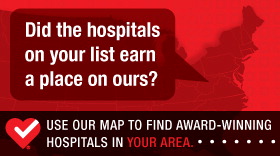


|
Page last updated
|
If the words GeoCities, Excite or Alta Vista mean anything to you, then chances are that the word ‘webring’ triggers a sudden pang of nostalgia. Webrings conjure up an era when finding things on the web wasn’t as easy as googling it; rather, it was an adventure wading through the abyss of this mysterious new “world wide web” in order to find information you were searching for. Though they were never a perfect solution by any means, webrings were one method of making it easier to categorize and discover websites. They complimented the early DIY spirit of the web, enabling similar niche (and often obscure) websites to band together in order to guide visitors from one site to the next. Not everyone loved webrings but those who did fondly remember using their low-res navigation boxes to find new great places on the web. So what exactly happened to webrings? Why are they not on websites anymore? We did a bit of digging and it turns out it’s pretty easy to identify exactly what led to their demise. What is a Webring? For those of you who weren’t active users of the Internet in the 90s, a webring was a box that sat at the bottom of a website, usually looking something like this: 
Back then, it was much more difficult to find great content online. Websites were difficult to build, so there weren’t nearly as many options as there are today. Plus, search engines were slow to load and often didn’t provide highly relevant results. Webrings offered a solution to this problem in a unique and straightforward way. A webring contained a list of websites that all contained a similar theme. A single moderator — or Ringmaster — was in charge of approving and adding each website to a webring. Sites participating in a webring would then place the ring’s navigation box at the bottom of their site, which would bring visitors to whichever site was next or previous in the list (depending on which option they selected). If a visitor was on the last site in the list and clicked next, the list would loop back and load the first website in the list, in essence forming a ring of websites. A Series of Acquisitions The technology for webrings was owned and managed by webring.org, which was purchased by an investment firm in 1997. These investors then sold webring.org shortly afterwards to GeoCities (a popular website creation tool at the time) in 1998. This was a logical new home for the company, since many of the existing webrings were on websites that had been created using GeoCities. These acquisitions were not noticeable to webrings’ users, since the service’s functionality did not change during this time; however, this would all change after the next big acquisition. In January 1999, Yahoo purchased GeoCities for $3.57 billion in stock. Whereas GeoCities purchased webring.org with a clear vision of how to integrate the service into its product, for Yahoo, webrings were an extra bonus that came along with their recent purchase. The question was then not how to keep the service running for the existing community but rather how to incorporate it into Yahoo’s revenue-generating business model. Several Bad Changes What followed were a series of events that were intended to improve the service but instead left both existing and new webrings users frustrated. First, managing a webring now required a Yahoo account to manage. This would have been alright, provided that attention had been given towards migrating a webring’s Ringmaster into the new system. Instead, the system did not keep track of who a webring’s owner was, meaning that the first person to log in and associate themselves with a ring became its new Ringmaster. The next change was in direct competition with the very nature of webrings. A webring was prided on offering a free and decentralized experience. A visitor entered a webring at a random point in the list of sites and could then travel to the next site in the list, which was determined by an individual Ringmaster. Yahoo’s new navigation bar listed Yahoo Webring home page as the ring’s hub, encouraging visitors to come to that central location. When visitors came here, they would then see Yahoo’s directory of webrings accompanied by ads — not the Ringmaster’s homepage which had previously been the norm. This took much of the emphasis away from that particular webring and the role of a Ringmaster, instead placing the attention on Yahoo’s ecosystem of services. Too Little Too Late In 2001, Yahoo gave up on webrings altogether. Most of the webrings staff was laid off in 2001, and in October they sold it to Tim Killeen, one of the early engineers who worked on the system. Though Killeen intended on returning the system to its former glory, by the time he took it over it was too late. By this point search engines had become faster and capable of delivering more accurate results. Webring.org is still up and running today, but it is more of a relic from the early Internet than a thriving community. You can still explore different rings and hop from site to site, but most of the sites and rings are stuck in time from the 90s/early 2000s and have not been updated since. If you feel like taking a stroll down memory lane, head over to Webring.org.
By: Webring Admin | Basics The future of webrings and webring systems like the world wide web is rather clouded at the moment. Will the big commercial enterprises/webrings take over, or will those who are rapidly getting fed up with the commercialization of the web, rebel and seek out new alternatives? Will advancements in programming languages and web browsers enhance or render commercial webrings obsolete? If the popularity of advertisement blocking programs/browsers/systems is any indication, the big old webring dinosaur systems seem to be doomed? Meanwhile the smaller webring systems powered by free webring programs such as Ringlink, are gaining ever more popularity, despite the limited number of options currently available. For example, there is currently no viable/free PHP webring system capable of hosting any number of webrings, and which makes use of a MYSQL database. As a result, a complete Webring System that would be developed and designed using PHP or PERL and MYSQL (Relational Database) is much anticipated (Ringlink says this prospect is years away)! The history of webrings has tended to give webrings a rather dubious notoriety, what with the unmanaged RingSurf system, and the Yahooization of WebRing.org by WebRing.com, which has dropped the Yahoo! logo even though it is still owned by Yahoo!, and provides pop-ups galore! The thing mostly likely to change in the future is a webring’s navpanel, which will surely become more streamlined and user friendly, as webdesign becomes more easily managed and open to all, and not just the small minority who know something about HTML and how to build a website. Navbar stacks like pop-ups and other forms of blatant excess and greed will hopefully go the way of the Dodo bird (total extinction)! So, hopefully the future of webrings promises the banishment of all that is ugly, a more user friendly interface, and webrings/webring systems that are smaller, better managed, and foster a happy community of member web sites/rings! With that in mind, it is rapidly becoming apparent, that all viable webring systems of the future will not be designed by 1 person, but by several, with each being responsible for a separate area (design, layout, website, interface, graphics, and…..) of the program. This will require the use of a template engine like PHP’s Smarty or a Perl template engine like FastTemplate.pm Templates are very useful for large complex webring programs, whether they be programmed in PHP or Perl. This is because adding HTML to a webring program’s PHP/Perl code clutters up the code and forces the developer doing the code to also do any and all HTML modifications. Therefore by putting all of a program’s HTML in separate template files, it allows another person whether she or he be a web, graphic, or interface designer to change the look of the application, without having to bug the stressed out program’s PHP/Perl developer, or muck around in this developers Perl/PHP code! In short webring programs of the future, where 1 developer does it all will be very rare, because of the ever growing complexities of webring systems, new features added, and Webring System Managers and Ringmasters who wish to have total control over the design and layout of THEIR webring system/s or ring/s Another obvious advantage of separating the code from the HTML with the use of templates, is the ease of upgrading that this provides! That is just dropping in the latest version of a program’s engine, without having to redo the design/layout of the system/ring… In short, the point of template engines should be to separate your webring logic from your presentation logic, not necessarily separate your PHP/Perl code from your HTML code entirely, but whether this is possible while having different designers doing separate functions of a webring program has yet to be realized. Maybe it never will? What do you think?? Musings from the Mailing Lists I remember years ago when almost every site I visited had two or three webrings, even really popular sites. Since then it’s a rarity to see them anywhere besides already established communities and small, cheap WYSIWYG sites which are lucky if they last six months without being abandoned. The reputation of webrings have been tarnished by the latter. I could point you to dozens of installations of the Ringmaker script which made it to *maybe* three ring sites. Only 5% or so make it past this. Webrings “just for fun” *aren’t* fun anymore. Webrings today need a *truly* specific purpose for existing. They need to be more than just a way to get extra traffic for the small-sites, and more than just a bit of code members put on their site and instantly forget about. I believe WoW is targetting the wrong audience. WoW is looking for people who want to try to *start* a community rather than those with *existing* communities which could benefit greatly from the closer ties a webring can offer. WoW is looking for people who still think of webrings with those 1990s rose-coloured glasses when communities “founded themselves” because of the lack of any alternate channels like MSN/Yahoo! Messenger or “communities in a box” like phpBB. No matter how different they may seem, WoW is presenting webrings in *competition* with these community channels rather than *complementary*. And right away webrings are at a disadvantage, being much harder than almost any other channel to maintain with any acceptable signal-to-noise ratio. They require a distributed effort, and there are few fish in the vast ocean willing to pay the price without significant community return. The largest example of the Ringmaker is the Pivot Webring. The vibrant Pivot community already existed with a fully functional phpBB and blog site and when the ring started up, initially 200 sites signed on. A few months later, when I upgraded the webmaster’s installation, he went through and began examining each member site for the existence of the ring code. Over *half* of that original 200 had either removed it deliberately, or forgot to include it again when redesigning. *This* is the apathy webrings have to deal with today; the funk they need to break out of. They are no longer taken seriously as a genuine means for gathering associated content into a structure which is easily navigated. It is my opinion that the WoW site does little to dispel this apathy, and intead reinforces the “circle of members” view of rings, rather than the “circle of information”. There is no one specific place on the site I can point to as an example of this. I am rather speaking of the gestalt which is the WoW website. The abandonded feel is one the main symptoms though, and so… Establishing a forum where users can provide immediate feedback and raise discussions among themselves is critical when building a community. Here are couple of examples of a popular Medical Forum and a Forum For Health Strategist.
|



|